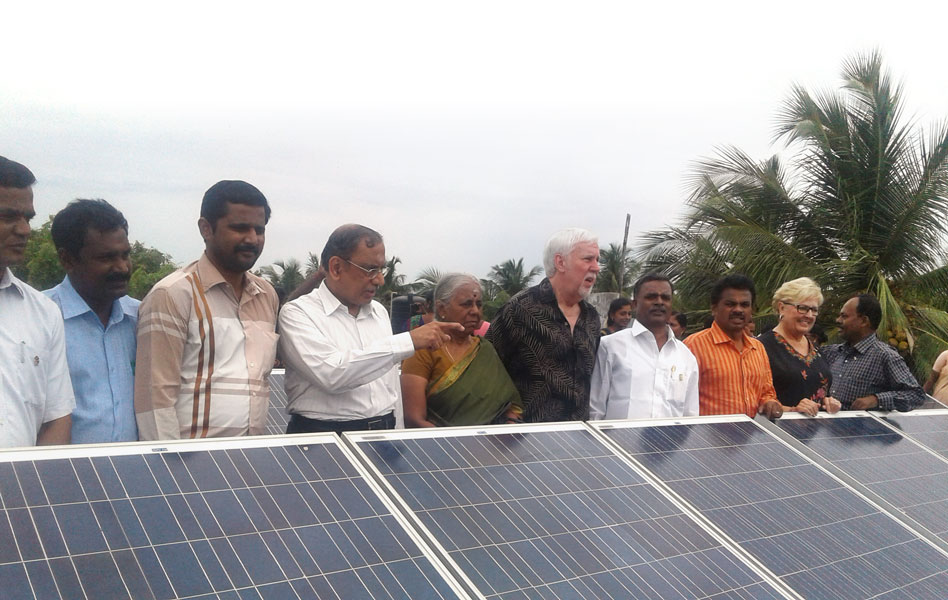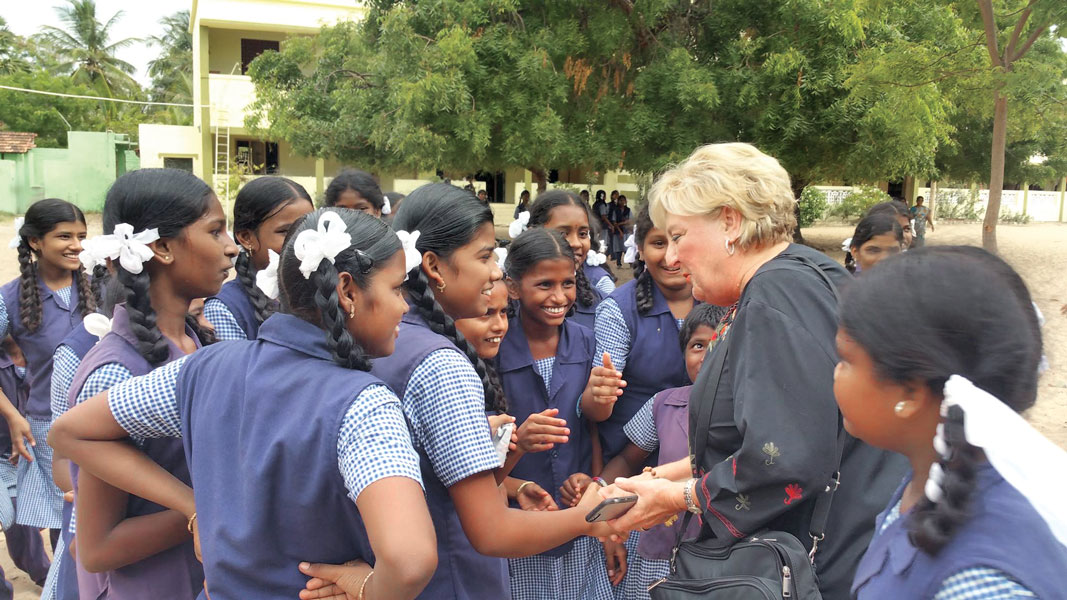
Mission Solar Rameswaram was an initiative launched in 2013 by late President Abdul Kalam to usher in solar energy in his hometown, Rameswaram on the southern tip of the Indian peninsula.
Dr M S Vijayaraghavan, a friend of Kalam and President of International We Serve Foundation, an NGO in Lexington, USA, was keen on bringing in the green energy to the island. They had been equipping homes, fishing boats, the Pamban Bridge and the streets with solar lighting.
Vijayaraghavan got in touch with Rtn Jeanne Clark, past president of RC Lexington and IPDG M Ashok Padmaraj of District 3212 to sponsor the solar electrification project in Rameshwaram schools.
Subsequently, a global grant was sanctioned by TRF along with Rotary Clubs of Rameswaram, Ramnad and Golden Ramnad of D 3212 and RCs Lexington, Richmond, West Liberty, Ashland, Pikeville, Hazard, Carlisle and Whitesberg of D 6740, USA.

Twelve government schools including the Mandapam Panchayat Union School where the former President had his primary education were provided with solar lighting under the first phase. The total cost was $71,575 and “it will brighten the minds of 15,000 children every year,” says DGE Dr Chinnadurai Abdullah. Solar panels ranging from 3–5 kv capacity, depending on the consumption requirement, were installed in schools. Some schools in the periphery did not have electricity connection at all, observes the DGE.
The inauguration was a grand affair with an exhibition of the miracles of space technology enthralling the children and adults alike. Former CBI Director D R Karthikeyan inaugurated the solar project in the presence of DG Navamani, Kalam’s Advisor V Ponraj, his grand nephew APJM Sheik Saleem and other past governors and Rotarians.
Jeanne, who had flown down specially for the inaugural, assured to arrange funds for providing solar power to another 10 schools under the second phase. “The estimate is $96,000 and this time we plan to equip all the 22 schools with multimedia kits too,” says Abdullah.





